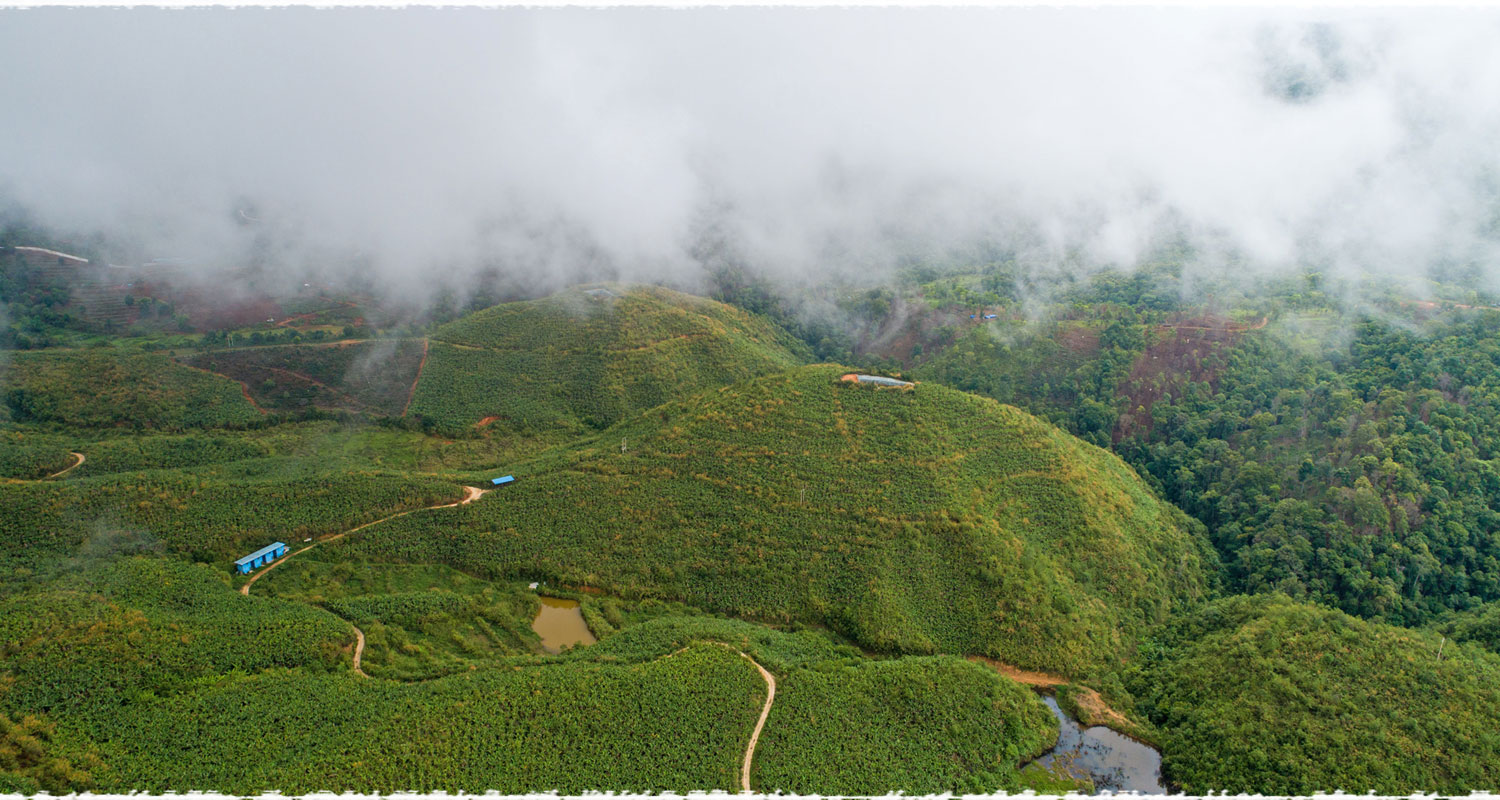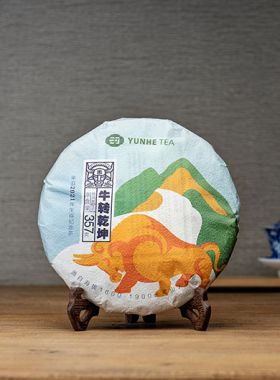-
Fast ShippingFree shipping for orders above $40
to most countries. -
Secure PaymentPay with Paypal, Credit Card …
-
Carefully SelectedFrequently Visit Tea Gardens.
Taste Repetitiously -
15 Days RefundNo Questions Asked
Refund Policy
Menghai Hui Wei Raw Pu-erh Cake Tea 2014
Multiple layers of flavor, sweet aftertaste
Multiple layers of flavor, sweet aftertaste
| Origin: |
Bulang Mountain, Menghai County, Xishuangbanna, Yunnan Province, China |
|---|---|
|
Harvest Date: |
April 5, 2014 |
|
Production Date: |
Dec. 24, 2014 |
| Weight: |
380g |
| Plucking Standard: |
One bud with two leaves |
| Dry Leaf: |
Round and tightly compressed cake, the stripes are fat and clear with obvious pekoes |
| Aroma: |
Orchid, rock sugar sweet fragrance |
| Liquor: |
Bright golden in color |
| Taste: |
Pure taste, sweet, mellow and smooth, full of Cha Qi |
| Tea Bush: |
Menghai large-leaf tea bush species (about 300 years) |
| Tea Garden: |
Bulang Mountain Ancient Tea Garden |
| Caffeine: |
Low caffeine (less than 10% of a cup of coffee) |
| Storage: |
Store in cool, dry place away from sunlight; keep ventilated |
| Shelf Life: |
The aged the better |
Angel's Comment:
A 10-year-anniversary pu-erh tea cake of the tea factory that we work with, and just won the award in Xishuangbanna, which is worth a try.
Bulang Mountain, in Menghai County, Xishuangbanna, is considered a gem, as it is home to many excellent pu-erh teas. This Hui Wei Raw Pu-erh cake is made from the raw materials from Lao Ban Zhang, Lao Man E, and Ban Pen. Thus, it has rich, multiple layers of taste and the Cha Qi is strong. The tea liquild has slight orchid aroma and a sweet fragrance of rock sugar. Bulang teas are supposed to get more aromatic with age and have a high collector value. We’re looking forward to seeing how it changes each year.
 |
Cup Method |
 |
Chinese Gongfu Method |
 |
Teacup: 12oz / 355ml |  |
Gaiwan: 3.8oz / 110ml |
 |
203℉ / 95℃ |  |
203℉ / 95℃ |
 |
5g Tea |  |
8g Tea |
 |
Brewing time: 3 - 5 mins |  |
11 steeps: rinse, 10s, 15s, 20s, 25s, 30s, 30s, 30s, 40s, 50s, 60s, 80s |
| Rinse time is 5 seconds |
Bulang Mountain has a long history of tea planting. As early as more than 1,000 years ago, Bulang nation people here began to grow tea. Bulang Mountain Ancient Tea Garden includes a number of pollution-free alpine forest areas, of which Banzhang and Lao Man'e are the most famous. The soil here is fertile, sunny, and rainfall is abundant. The average annual rainfall is about 1300 mm, and the annual average temperature is 18 ℃ ~ 21 ℃. Furthermore, Bulang Mountain tea is a green and healthy ecological tea that is free of chemical fertilizers and pesticides. Therefore, it is very popular among tea lovers.
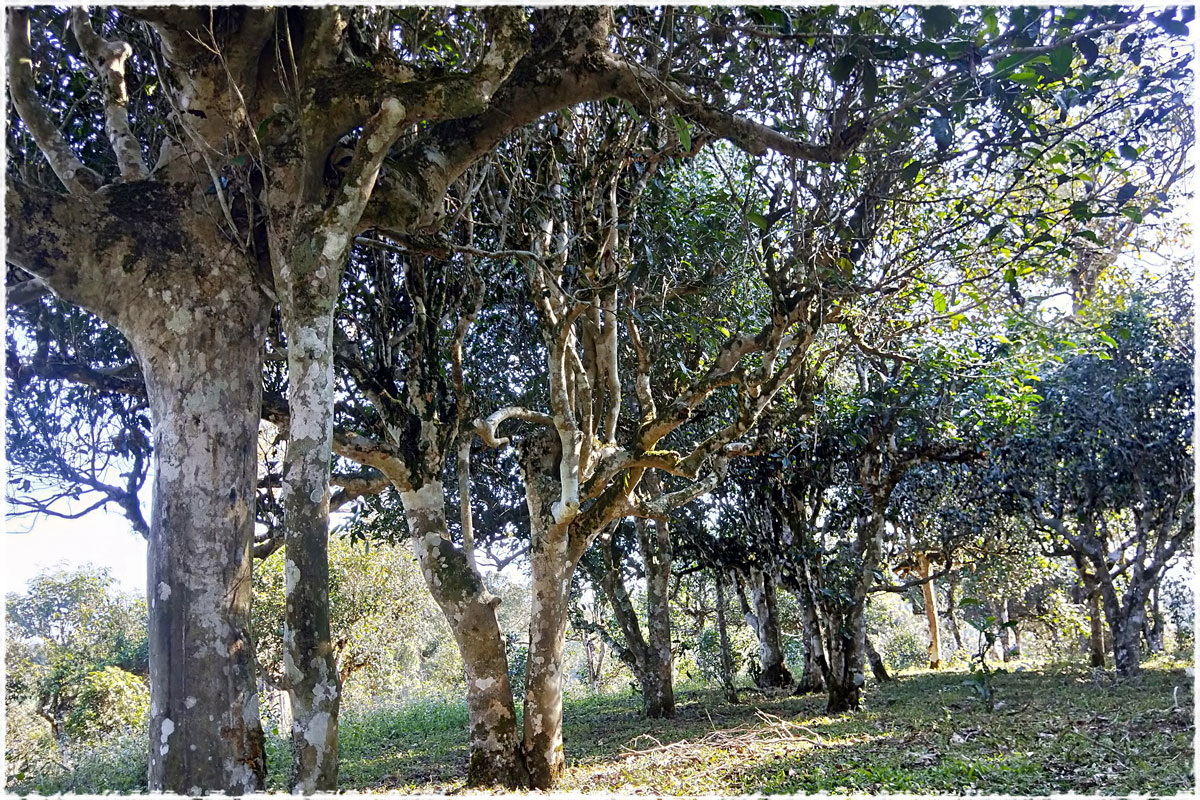
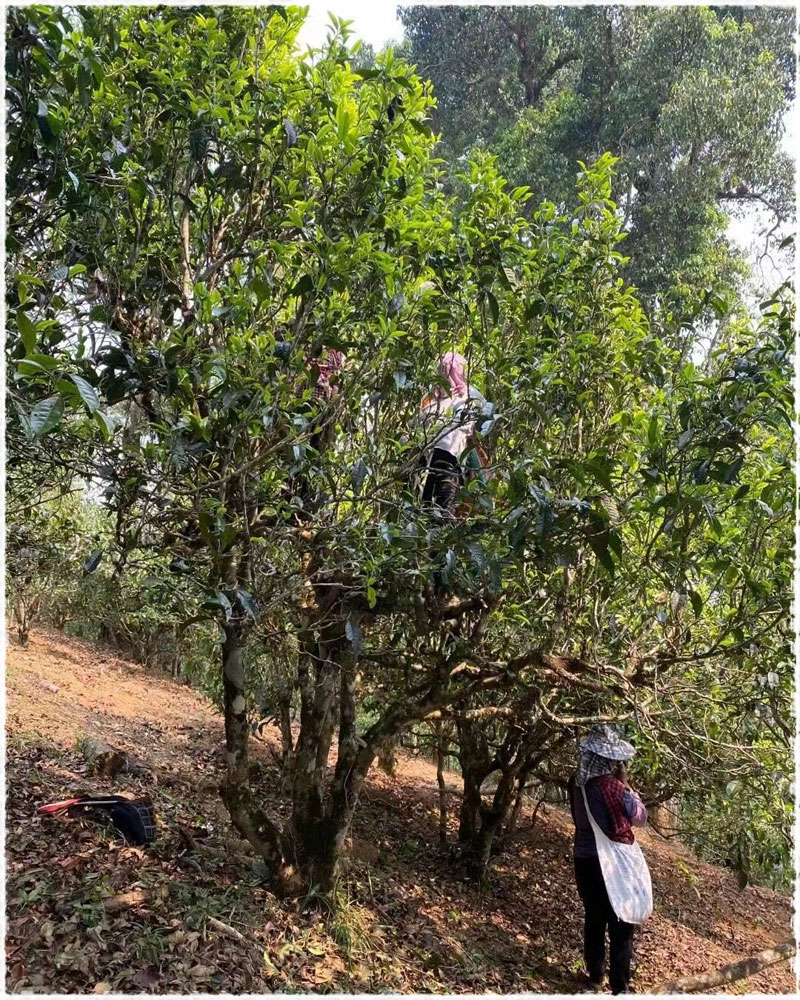
Bulang Mountain sits in Menghai County of Xishuangbanna, Yunnan, and is a famous area of pu-erh production. This mountain houses the largest concentration of ancient tea trees within a 100,000-hectare area.
The mountain rolls and stretches across Menghai, with deep valleys cutting through hills that can reach up to 1216 meters on average, with the highest point, Sanduo Peak, rising almost 2100m above sea level. Bulang Mountain experiences a subtropical monsoon climate, with abundant sunlight and rainfall of about 1374mm per year, and the average temperature between 18 and 21℃. There is little risk of frost here, and the season for it is also short; during the spring and winter a heavy fog blankets the mountain, while the summer and autumn months are often overcast and rainy.
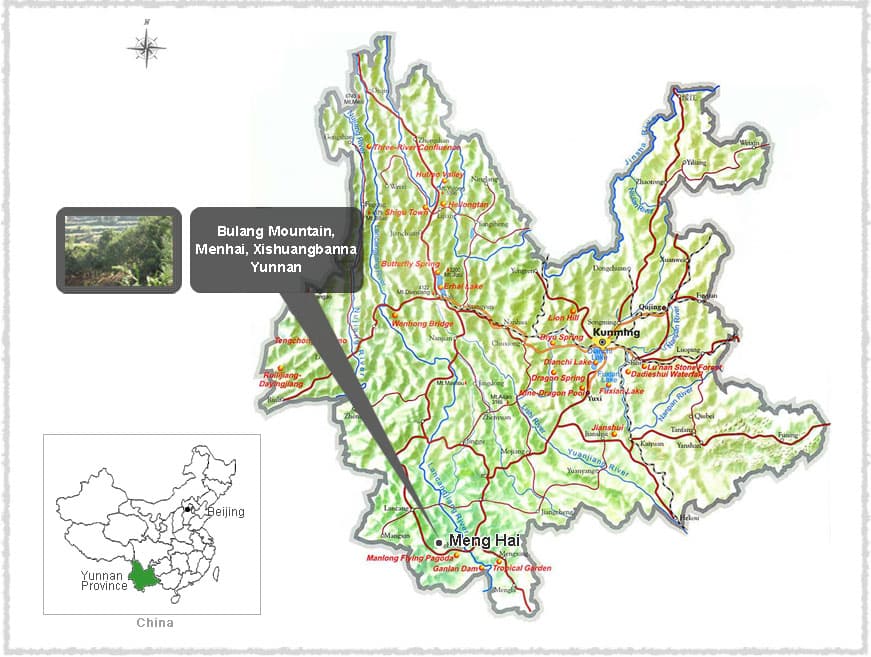
Native to Menghai County in Xishuangbanna, the Menghai large-leaf tea species was rated as the most improved national variety in 1984. It grows up to 7m tall in the wild with bold green leaves noticeably larger than more common varieties, and the buds of this species are yellowish-green and coated in fuzz. The leaves are high in phytochemicals, with one bud and two leaves containing 2.3% amino acids, 32.8% polyphenolic compounds, 4.1% caffeine, and 18.2% catechinic acid. Because of this, pu-erh tea made from this species is high in quality, rich yet soft in taste, and maintains a full-bodied essence.
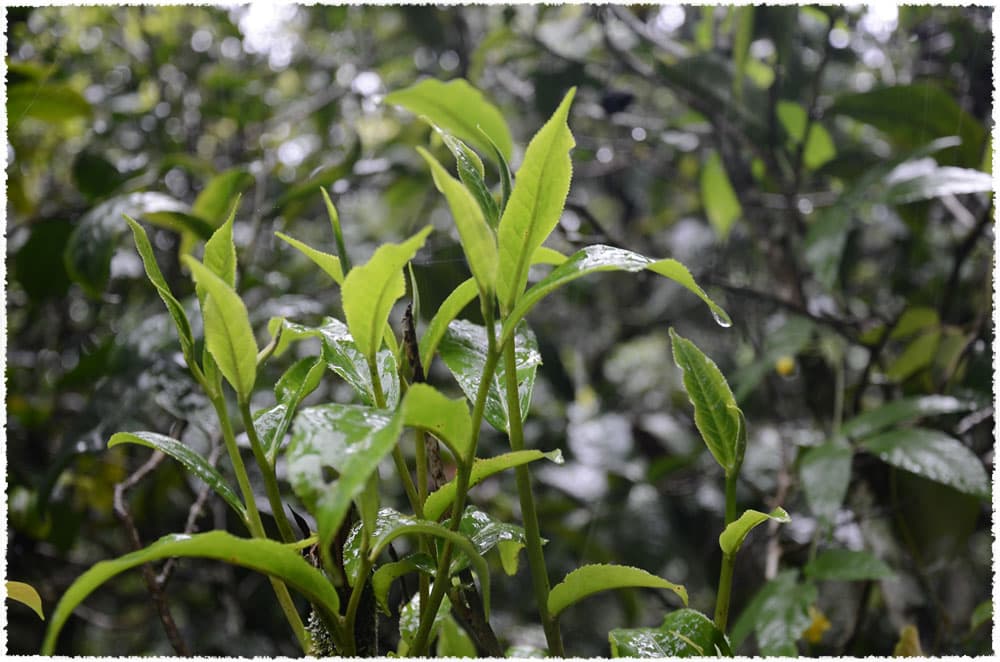
Pu-erh is one of the oldest types of tea in China with a history stretching back over 1700 years to the Eastern Han Dynasty, when the tea was called Jing Cha. It is named after the town of Pu’er in Yunnan province, which was originally the early trading center for this tea. In early history pu-erh was used as a bartering currency in southwest China, with the famed Cha Ma Gu Dao, the Tea Horse Road, being built for the purpose of transporting this tea through the Himalayas to other countries and areas in Tibet.





